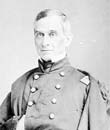
Day-by-Day Timeline of Events
December 26, 1860
U.S. Major Robert Anderson evacuates Fort Moultrie and his garrison relocates to Fort Sumter.
December 27, 1860
Confederate troops take over Fort Moultrie as well as Fort Johnson and Fort Pinkney in Charleston Harbor, South Carolina.
January 2, 1861
North Carolinian forces take the Fayetteville arsenal as well as Fort Macon and the forts of Wilmington.
January 8, 1861
A U.S. Army garrison stationed at Fort Barrancas (Pensacola, Florida) turns back an attempted assault to take the fort.
January 9, 1861
The steamer "Star of the West", laden with supplies and en route to Fort Sumter in Charleston (South Carolina), is fired upon by land-based cannons.
January 12, 1861
Star of the West, a steamer having delivered supplies to Fort Sumter in Charleston, South Carolina, returns to New York with her battle-damaged hull resulting from a Confederate attack.
April 6, 1861
President Lincoln notifies the government of South Carolina that general supplies will be sent to Fort Sumter at Charleston Harbor - he gives his assurances that any strengthening of the position will only be made if the Fort is in danger of attack.
April 11, 1861
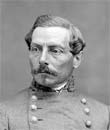
April 12, 1861
With the refusal by Union forces at Fort Sumter to surrender their post, Confederate forces begin their ranged bombardment of the island.
April 12, 1861
At 4:30AM, a gun from Fort Johnson fires a star shell that detonates above Fort Sumter. This is the signal for the surrounding gun batteries to begin shelling the Union-held fort.
April 12, 1861
At 7:00AM, the guns of Fort Sumter return fire against Confederate positions in Charleston Harbor.
April 24, 1861
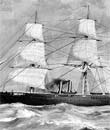
April 29, 1861
Confederate President Jefferson Davis calls a special session of congress to address recent developments - including the capture of Fort Sumter by South Carolinian forces.
May 14, 1861
Both Fort McHenry and Baltimore, Maryland are occupied by troops under the direction of General Benjamin Butler.
July 27, 1861
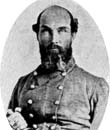
February 4, 1862
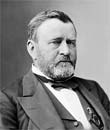
February 5, 1862
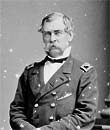
February 6, 1862
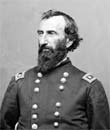
February 6, 1862
At 11:00AM, General Smith's forces begin their march against Fort Heiman along the Tennessee River.
February 6, 1862
Union Flag Officer Foote leads his gunboat flotilla against Fort Henry. The action takes place from 11:00AM until about 1:55PM and is in concert with land movements of General McClernand and General Smith under General Grant.
February 6, 1862
At 6:00PM on this date, General Grant's troops finally claim (through occupation) Fort Henry on the Tennessee River.
February 6, 1862
Fort Henry, along the Tennessee River in Tennessee, falls to forces under the combine efforts of land and naval forces under the direction of General Grant. He then turns his attention eastward towards enemy-held Fort Donelson along the Cumberland River.
February 8, 1862
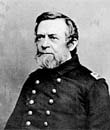
February 11, 1862
General Grant orders an advanced force to begin their march towards Fort Donelson.
February 12, 1862
Despite the combined strength of General McClernand and Smith's divisions, General Grant is forced to stop within twelve miles of Fort Donelson as he remains outnumbered.
February 13, 1862
Forces under the command of Union General Ulysses S. Grant begin their attack to take Fort Donelson along the Tennessee River.
February 13, 1862
Without order from General Grant, both General McClernand and General Smith launch unsuccessful attacks against Fort Donelson.
February 14, 1862
Under heavy and accurate fire, Union Flag Officer Foote's gunboat floatilla are repelled by the guns of Fort Donelson.
February 14, 1862
Union forces under Lew Wallace arrive at Fort Donelson from Fort Heiman and are further reinforced by fresh troops transport via the river Cumberland. With three divisions now formed under General Grant, he holds numerical superiority against the defenders at Fort Donelson.
February 16, 1862
Union General Grant is victorious at Fort Donelson along the Tennessee River in Tennessee. 14,000 prisoners are taken after the General demands an "unconditional and immediate surrender" of the enemy.
April 11, 1862
Fort Pulaski in Georgia falls to Union forces. The forts strategic placement at the mouth of the Savannah River made it important for both sides.
April 28, 1862
Confederate elements at Fort St. Philip and Fort Jackson (New Orleans) surrender to Union forces.
May 10, 1862
A naval engagement is fought four miles up river from Fort Pillow in Tennessee with the Confederates claiming the victory.
January 11, 1863
The Union Army claims Fort Hindman off the Arkansas River near Little Rock. Union Navy gunboats assist in the successful action.
February 24, 1863
The Territory of Arizona is established by the American government. Fort Whipple is named its capital and John Goodwin its governor.
March 11, 1863
In an action at Greenwood, Mississippi, Union warships fail to neutralize Fort Pemberton.
March 17, 1863
Confederate forces at Fort Pemberton block General Grant's passage along the Yazoo River in Mississippi.
April 7, 1863
Union ironclads engage the defenses at Fort Sumter but do not manage to break the will of the defenders.
April 8, 1863
USS Keokuk is lost following its previous day's participation in the engagement at Fort Sumter.
June 28, 1863
Union defenders at Fort Butler in Donaldsonville, Florida are victorious against attacking Confederate forces.
July 18, 1863
Union forces fail to take Fort Wagner. near Charleston, South Carolina. The 54th Massachusetts Regiment taking part in the attack is made up of Negro soldiers, the first of its kind for the Union Army.
September 6, 1863
Under pressure from a Union bombardment, Confederate forces relocate from Fort Wagner in Charleston Harbor, South Carolina.
September 8, 1863
A night time Union naval attack fails to retake Fort Sumter in Charleston Harbor. The attack is directed by Admiral John Dahlgren.
October 4, 1863
Colonel Quantrill and his raiders take prisoner Union cavalry while dressed in Union garb and proceed to execute about 100. The action takes place near Fort Smith, Arkansas.
October 28, 1863
The Gillmore Medal is announced by General Quincy Gillmore of the Union Army. This award serves to recognize those having attempted to retake Fort Wagner in Charleston Harbor.
November 29, 1863
Confederate attackers are forced back by Union defenders at Fort Sanders near Knoxville, Tennessee.
March 4, 1864
CSS Don, a Confederate Navy blockade runner, is run down and captured by USS Pequot near Beaufort, North Carolina.
April 9, 1865
The Battle of Fort Blakely comes to a close. It is a Union victory for Army of West Mississippi commander Edward Canby.
April 12, 1864
Fort Pillow, Tennessee, is the site of a Confederate victory by General Nathan Bedford. Black soldiers fighting for the Union are executed.
May 15, 1864
The Battle of Fort Darling - or Battle of Drewry's Bluff - is had pitting five Union warships against an artillery-laden Confederate fort in Chesterfield County, Virginia. It is a Confederate victory for General Beauregard. Union General Benjamin Butler is handed the defeat.
July 11, 1864
Fort Stevens in Washington, D.C. is fired upon by elements of Confederate General General Early (the Battle of Fort Stevens). This occurs during a visit by President Lincoln.
August 8, 1864
The Union Army, directed by Gordon Granger, takes Fort Gaines (Dauphin Island) during the Battle of Mobile Bay. 900 prisoners are taken.
September 18, 1864
Union defenders stand fast against a Confederate attack at Fort Gibson (Oklahoma / Indian Territory).
September 27, 1864
Fort Davidson, Missouri is the site of a Union victory over the Confederates. The victors are commanded by General Thomas Ewing. General Sterling Price leads the Confederate attackers.
November 23, 1864
Union forces at Fort Fisher in North Carolina fail to unseat Confederate defenders through explosives.
December 12, 1864
Union forces undertake a new offensive to capture the Confederate-held position at Fort Fisher, North Carolina. The offensive will last until the 27th.
December 13, 1864
Fort McAllister falls to Union guns. The capture is another victory for General Sherman as the Union army inches its way closer to the prize that is Savannah, Georgia.
December 25, 1864
Again, defenders at Fort Fisher (Wilmington, North Carolina) survive another Union attempt to take their position. This time the Union enacts a combined land and sea attack to no avail.
December 27, 1864
Defenders at Fort Fisher, North Carolina, are successful in their defense against a Union offensive to retake the position.
December 28, 1864
Fort Harrison is taken by Union troops led by General Grant. This is significant in that the fort guards the route towards Richmond, Virginia - the Confederate capital.
March 25, 1865
Union troops are victorious at the Battle of Fort Stedman in Petersburg, Virginia. The engagement is also known as the Battle of Hare's Hill.
April 2, 1865
The Battle of Fort Blakely begins in Baldwin County, Alabama. It is part of the Mobile Campaign and pits 45,000 Union attackers against 4,000 Confederate defenders. This battle marks the last combined-force engagement of the Civil War.
April 14, 1865
The United States Flag once again flies over the walls of Fort Sumter - where the first shots of the war were fired.
May 22, 1865
Former Confederate President, Jefferson Davis, now a prisoner of the North, is relocated to Fort Monroe in Virginia.


